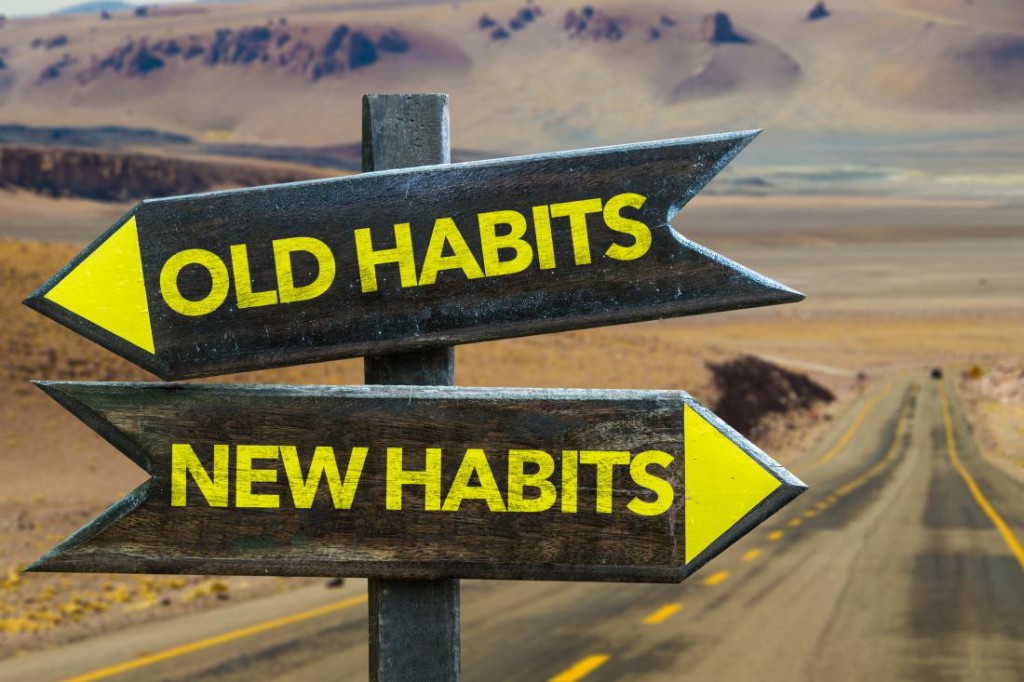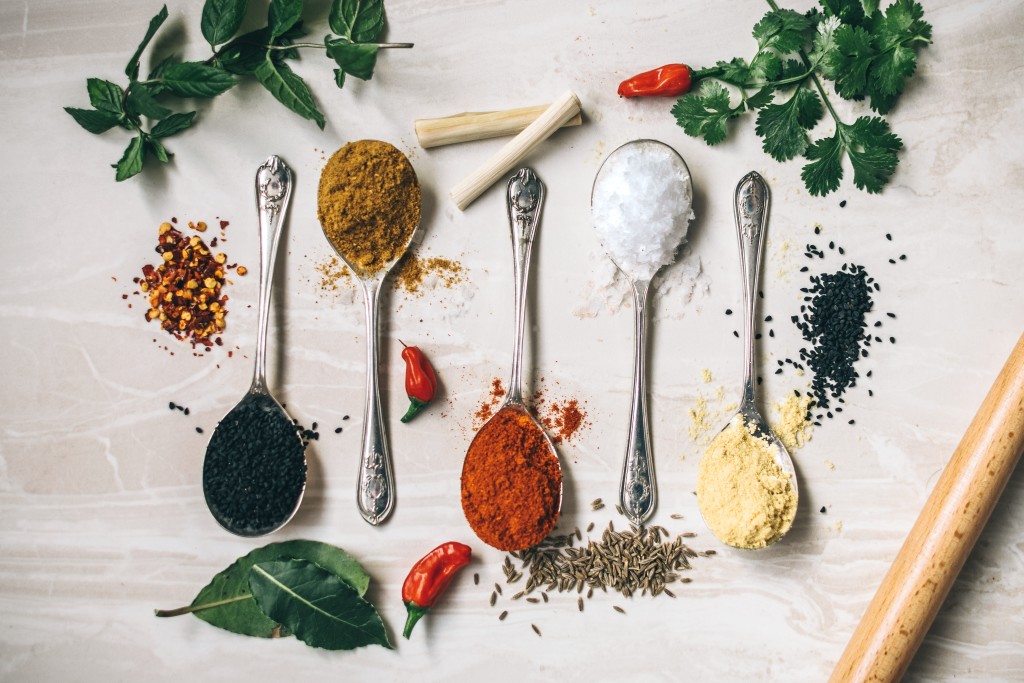Tags
acne aging anti-aging beauty detox diet exercise fasting healing health healthy lifestyle healthy living healthy recipes inspiration juicing Living la Vida Raw meditation mindfulness Move Your Body Natural Beauty natural cures Natural Cures natural remedies nutrition nutritionist parasites raw raw food Raw Food for Thought raw foods raw girl Raw News raw recipes Raw Spirit Recipes skin spirulina stress vegan vegan lifestyle vegan recipes vegetarian Veggie Love wellness yogaNewsletter Sign-up
Tag Archives: vegan
Healthy Living in a Toxic World – Episode 6: Transitioning to a Vegan Diet
In this episode of Healthy Living in a Toxic World, we speak to Victoria Moran, a vegan lifestyle expert, author of Main Street Vegan, and founder of the Main Street Vegan Academy about how to transition to a plant-based vegan diet.
We discuss:
- Myths about veganism including where to get protein
- How to find a balance on a vegan diet
- Tips to make transitioning easier
- How to save money on a vegan diet
- Where to find great vegan food when eating out
- How to handle dating, social and family situations while vegan
& More! Tune in and don’t forget to share!
Podcast: Play in new window | Download
Podcast Episode 2: Plant-Based Diet
Episode 2 of Healthy Living in a Toxic World has been live for a week now, hope you have caught it! It was a real honor to have the opportunity to interview Dr. T. Colin Campbell, author of the China Study, and Founder of the T. Colin Campbell Center for Nutrition Studies at my alma mater Cornell University. You may have also seen Dr. Campbell in awesome plant-based focused documentaries such as Forks Over Knives. Dr. Campbell and I discussed the wide range of diseases that can benefit or be healed just by switching to a plant-based lifestyle. One of the most interesting nuggets I took from our conversation was the origin of the protein myth. Dr. Campbell mentions that this idea that we need excessive amounts of animal protein actually started after a study on dogs (not humans) was published in the 1800s and showed that the animals were weaker with a lower consumption of protein. Crazy huh?
As you may know, as a nutritionist I believe in bio-individuality and that we all need to find the unique balance of foods that work for our bodies. That said, I do believe that EVERYONE can benefit from eating more plant-based foods, and eliminating processed foods. Take a look at your diet today, and see how you can add in more organic fresh fruits and vegetables whether it be including smoothies, juices, fresh salads, or additional sides.
To listen to the full conversation, subscribe to the podcast on Itunes, Spotify, or Google Play. Links below 🙂 -XO Esosa E, MS AKA Raw Girl
Healthy Living in a Toxic World – Episode 2: The Benefits of a Plant Based Diet
In this episode of Healthy Living in a Toxic World, I spoke with Dr. T. Colin Campbell, author of the groundbreaking and best selling book The China Study who has spent more than 70 years researching the connection between diet and disease.
In this episode we discuss:
- The core benefits of a plant-based diet
- Myths and misinformation about protein and where it all began
- Diseases that can be prevented or healed with a plant-based diet
- What nutrients need to be supplemented on a plant-based diet
- What foods turn on cancer cells?
- Is B12 deficiency really a big deal on a plant-based diet?
& More!
Podcast: Play in new window | Download
The Art of Creating Healthy Rituals
If you spend any time studying the world’s most successful and productive people or high performance athletes, you will discover that they all have many things in common. One specific common denominator is the ability to create and maintain healthy rituals that allow them to maximize their time, energy, and focus throughout the day. What is a ritual? Rituals are essentially habits that we can create and repeat over and over. What can make a ritual special is that they can become sacred. Just as religious ceremonies perform certain rituals, the daily actions you take over and over consciously or unconsciously are also affecting your daily life. When you take control and create rituals that feed your soul, you take better control of your destiny. Below are some steps to help you begin on your path to establishing rituals that feed your mind, body and spirit.
Baby Steps. You may have a very clear vision in our mind of who you want to be. The healthier version of you exercises every day, loves juicing, and is a meditation junkie. The reality is though you may be starting with getting in 1-2 workouts a week, 5 minutes of meditation, and simply remembering to eat our vegetables. Rather than get overwhelmed by how far you are from your grand vision, it’s important to begin where you are and take small actions. Start by writing down that grand vision –who you want to be at your best in all areas, and then make very small actionable goals that you can do daily for each. If you want to make time for meditation maybe you begin with 5 minutes, and then slowly increase in increments until you reach your goal.
Push through resistance with preparation. This is also known as stop saying YES to your excuses. When we are trying to make major changes, it can be easy to listen to that voice in our head that seems to come up with every and any excuse to not follow through. The hardest part of changes is pushing through resistance and showing up, until we get results. That may mean going to sleep in you workout clothes so you can roll out of bed in the morning and hit the gym, setting meal prep days on the weekends so your nutrition is on point during the week, creating a healthy snack drawer at work so you don’t give in to office sweets. Very often when we live a life that is ritual-free we are used to being at the mercy of our circumstances. Creating rituals empowers us, and preparation helps us honor the goals we set one day at a time.
Create accountability. We all need different levels of accountability to have success and you may think you can go it alone, but by doing so you may being doing yourself a disservice. Why? The power of minds in agreement is real, and it’s important to work with someone who knows more than you in a specific area so that your actions can be more effective. Every seen someone desperate to reach a goal and trying everything and anything, expending all their energy only to burn out when there is no progress? Take that same person and give them a mentor or coach who has achieved or knows how to achieve the goal and they almost get a “shortcut” blueprint to reach their goal faster, calmer, and with more laser focused energy. Accountability can also be created by including others in your ritual. Maybe you go with friends to yoga regularly, or set gym dates with your bff. Bringing others along makes you more likely not to forget and also makes the experience a social one.
Set Reminders & Notifications. In order for a ritual to become one, you need to repeat it often. That means scheduling in time daily or weekly, and making sure you show up nine times out of ten. When you start to prioritize your rituals and write them down in your planner and set notifications on your phone, you are more likely to remember to do them in the first place, and start hardwiring your brain to make it a habit.
Tracking & Journaling to Assess Impact. Tracking can feel tedious for some, but for others it serves as a gentle reminder of our success or failure with implementing new habits. It doesn’t have to be boring, as now there are apps on the iPhone to track almost anything from water intake to mediation. You can also make tracking fun by using gold stars or stickers in your planner. Make it festive so that you are celebrating the small daily wins. Beyond tracking, even more important is really taking note of how our ritual is slowly shifting our lives. One amazing way to do this is to journal daily and note any changes in the flow of your day, emotions, and overall energy. This allows you to look back and review how your new ritual is improving your life and gives you positive data to support continuing it, or adjusting to better suit you.
Choose Rituals that Bring Your Joy. Part of the way you can create lasting rituals is to actually incorporate things in our lives that you love to do. Your ritual should give you more energy, peace, or add to your emotional, physical, or spiritual wellness. As you practice them, it’s really important to stay completely present and focused on the joy they bring you, and in the space of gratitude that you have taken time out for yourself.
7 Simple Weight Loss Tips
It’s almost Christmas!!! Hope you and yours have a merry one, and also managed to avoid starting the New Year with an extra ten pounds to lose added to your resolutions. Weight loss and weight maintenance can at times seem very daunting because there is a plethora of information out there on the topic. Between fad diets, weight loss success stories, and the wide range of experts claiming to have solutions weight loss can start to seem overwhelming or confusing. In my clinical practice I see clients daily struggling with weight loss and maintenance, and these are some simple tips that can help you stay on track.
- Eat Breakfast Daily. A common mistake many people make when they are trying to lose weight is to skip meals. Although it seems logical that if you eat way less or next to nothing at all you will lose weight, that is not the case. When you are undernourished is your body thinks you are starving and conserves fat. By starting the day off with a balanced breakfast (which can be light) we give our body essential nutrients it needs and help to prevent overeating later in the day.
- Weigh yourself at least once a week. Don’t go overboard with this, but monitoring your weight at least once weekly can help you stay on track and make sure you are not unconsciously gaining weight after all of those holiday parties! When weighing yourself try to do it first thing in the morning before meals and at the same consistent time. If you weigh yourself more than once a day you may notice that in the evening or after meals you weigh more which is natural. It’s ideal to only weight yourself once and not get too caught up in the natural daily fluctuations that happen with additional water and food.
- Watch less than 10 hours of TV per week. Reducing the amount of sedentary in your day overall can go a long way to improving weight maintenance and helping with weight loss. Long hours of TV watching is not helpful for many reasons. In addition to the fact that it is a sedentary activity, you may find that while you are watching you also eat. When we eat in front of the television, we tend to overeat ad be less conscious of the portions of food we are consuming. During TV programs there are also multiple advertisements for fast food which can lead us to crave less than healthy foods. If you are going to watch TV for long periods, try exercising while you watch so that you are moving towards your weight loss goals and burning calories.
- Exercise every day, or at minimum two to three times per week. Wellness guru Jack Lalanne once said “Exercise is King. Nutrition is Queen. Put them together and you have a kingdom.” Regular exercise is essential for weight loss, maintaining healthy weight, and remaining youthful. Research has shown that those who exercise regularly are sometimes 10-20 years younger than their non-exercising counterparts.
- Use a food activity / diary or log. Tracking your food and activity keeps you accountable for your health goals. Sometimes we can over or under exaggerate our health habits, but when it is clearly written down we are faced with the truth of our habits and can more easily make adjustments to help us reach our goals. The great news is there are many apps that can assist with tracking including Lose It! And My Fitness Pal. If you are not an app person, you want to use good old fashioned pen and paper to log your meals and that works too!
- Choose a low calorie eating plan. If you are trying to lose weight you may have heard that calories matter. Although the quality of the food you consume can also help encourage weight loss, it is important to be aware of quantity. But where do you start? A simple way to find out what calorie level to work for you is to calculate your basal metabolic rate. There are many basal metabolic weight calculators online and all you need to input is your age and height. You’ll want your calories to remain somewhere between 500-1000 above your BMR depending on your activity level. The best way to receive professional guidance on this is to see a nutritionist or dietician who can create a plan for you.
- Limit fast and processed foods. Consumption of processed food derails your progress and speeds weight gain. When we eat whole nutrient dense foods we avoid refined sugar, refined flours, and excess sodium which increases inflammation and lead to weight gain over time. It’s been proven that the less you eat out the less likely you are to gain weight and you can eat larger quantities at home and lose weight than you can at fast food or restaurants. When we eat fast food the other issue is that our body does not actually receive the nutrients it needs to function optimally, so we don’t get the internal cues to stop eating. On top of that, most processed foods are scientifically designed to make us crave more of them! The added sugars and salt become addictive, but the food does not satisfy our daily nutritional requirements.
Healthy Living in a Toxic World – Episode 1: The Ageless Woman
In this episode of Healthy Living in a Toxic World, I speak to Annette Larkins a living longevity expert, also known as “The Ageless Woman” about what incorporates in her diet and lifestyle to stay ageless.
We discuss:
- How a genetic background for disease can be trumped by lifestyle
- The importance of a positive mindset for staying ageless
- The raw food diet and what kinds of supplements help contribute to staying youthful
- Her personal health journey that led her to a raw food diet
- Annette’s top tips for living a long healthy life
- Important lifestyle habits to help you stay ageless
& More…
Podcast: Play in new window | Download
Taste As Medicine: Using the Energetics of Food to Heal
In all of the major ancient systems of healing including traditional Chinese medicine, Ayurveda, Native American healing protocols, the taste of food and herbs has been recognized as a form of medicine. In each system, how taste are used to indicate healing is unique. By understanding how our bodies’ individual react to different tastes, we can get a better understanding of how we are being affected physiologically, and also how to eat to bring ourselves back into balance. The five flavors that should be a part of all of our meals include: sweet, salty, sour, pungent, and bitter. At various points in our lifespan we may find that we gravitate more to certain tastes, but if we overdo it, we can throw our system off balance. Below is a brief breakdown of how the each of the flavors affect your body so that you can be aware. As you read through, ask yourself if there are certain flavors you feel you eat in excess, or others you never eat at all. By making a mental note you can choose to actively balance your foods choices moving forward and maybe even try new options. -XO Raw Girl
Sweet foods, which also includes bland foods are high calorie foods that are heavy, provide high nutrient content in the form on fat, protein,carbs, and essential vitamins and minerals. Eating sweet or bland foods has a nourishing effect on the body and is also grounding and comforting. Consuming excess sweet/bland foods however can cause lethargy, sluggishness, reduce appetite, poor digestion, improper elimination, increase mucus production in the body and difficulty focusing. Some examples of sweet/bland foods include: animal fats, eggs, meat, milk, fruit and fruit juices, grains, nuts and seeds, root crops and winter squashes. Herbs include: cinnamon, fennel, goji berry, licorice, marshmallow, and shatavari.
Pungent foods which includes foods and herbs that are “spicy” are stimulating and can help to balance more potent flavors such as sweet and salty foods in dishes. Consuming pungent foods can stimulate digestion and assimilation and pungent aromatic herbs such as ginger, black pepper, and sage also help to relieve symptoms of gas and bloating. If you consume pungent foods in excess you can experience irritability, exhaustion, feel emotionally taxed or overstimulated. Some examples of pungent foods include: arugula, cabbage, coffee, horseradish, hot peppers, mustard greens, radishes, raw onions, leek, garlic, and watercress. Herbs include: basil, black pepper, cayenne, cinnamon, clove, cumin, ginger, mint, nutmeg, rosemary, sage, thyme, and turmeric.
Sour foods cause tissue contraction, can tone mucous membranes, and stimulate release of bile from the liver and gallbladder. The sour taste is generally cooling, moistening, and toning in small amounts and is helpful in digestion of fats, oils, and protein rich foods. Sour foods can also enhance If consumed in excess, sour foods can cause heat, aggravation the GI tracts, hunger, and low blood sugar symptoms. Excess can also result in skin conditions such as acne, eczema, psoriasis, boils, and aggravate arthritis. Some examples of sour foods include: berries, citrus, fermented dairy, fermented vegetables, some fruits such as green apples, grapes, plums, kombucha, miso. Pomegranates, tomatoes, vinegar, and wine. Herbs include: Hawthorne berry, hibiscus, rose hips. Rose petals, schizandra berry and sorrel.
Salty foods when eaten in moderation promote proper digestion and improve nutrient absorption. In excess, salty foods can irritate inflammation in the body or on the skin such as rashes, and cause emotional irritation, agitation. Too much salt also causes the body to retain water and can lead to edema, swelling, and increased blood pressure. Salt has a grounding, heavy, moistening, soothing, and warming effect in the body and when used in cooking it draws out other flavors. If you are nervous, struggle with anxiety, or have dry skin, hair, or nails you may benefit from consuming more salty foods if your blood pressure is not high. The best form of salt to consume is unprocessed and unrefined salt that is rich in minerals which are nourishing to the musculoskeletal system. Some salty foods include: anchovies, celery, smoked meat, hard cheeses, nettles, meat, spinach, olives, swiss chard, and sea vegetables. Herbs include: cumin, celery seed, cilantro, coriander, dill, parsley, and lovage.
Bitter foods may be the least popular foods to consume, but actually happen to be the most metabolically active of the five core flavors! Consuming bitter foods promotes detoxification, promotes hormone regulation, stimulates metabolic functioning and the breakdown and assimilation of nutrients. Bitter foods have a cooling, drying, and anti-inflammatory effect on the body and stimulate the entire digestive process. Beyond relieving digestive related symptoms such as acid reflux, heartburn, and other GI tract disturbances, getting in a little bitter every now and then can also support a healthy appetite, improve heart health, lower cholesterol, help with weight management, and improve blood sugar balance. Despite all of these amazing benefits, bitter foods tend to be the most neglected and are not staples in the Western or Standard American Diet. Some examples of bitter foods include: artichoke, bitter lettuces and salad greens, cocktail bitters, coffee, black tea, green tea, dark chocolate, dark leafy greens. Bitter herbs include: burdock root, caraway seeds, chamomile, coriander seed, dandelion root, fenugreek seed, orange peel, rosemary, sage, thyme,and yellow dock.
References:
Nickerson, B. W. (2017). Recipes from the herbalists kitchen. North Adams, MA: Storey Publishing.
10 Fundamentals of Self-Care
One of the true markers of health is resilience, the ability to bounce back after any major or minor stressor. The regular practice of self-care to “fill your well” helps to increase your resilience and boost your overall health long term. Below are fundamentals of self-care to help you focus attention and create healthy rituals in specific dimensions of your wellness. -XO Raw Girl
- Proper Nutrition: Eating properly is essential to good health and spending the time to really assess what your nutritional requirements are is key. All of us are different, and it’s important to remove any foods that cause inflammation, allergens, or even mild food sensitivities. You can also spend time assessing the appropriate levels of protein, healthy fats, and carbohydrates that makes you feel at your best, and place emphasis on eating whole unprocessed foods.
- Water is needed by your body to function properly and to encourage proper elimination. To determine the amount of water that is adequate for you, divide your body weight in half and drink that many fluid ounces of water. For a woman weighing 140 pounds, 70 fluid ounces of water will be ideal to keep her hydrated and the metabolic processes in her body functioning optimally.There is a thing as too much water, so you can generally try not to exceed 125 fluid ounces.
- Sleep is the pillar of health that must be the foundation for other aspects of wellness like diet and exercise. Sleep deprivation increases our insulin resistance, influences the hormones that affect our cravings, decreases our memory recall and retention, and can decrease our alertness and motor skills while driving or at work. The sleep requirement for you is going to be unique to your body, but a good generally rule of thumb is to aim for a minimum of 7-8 hours.
- Mindfulness when practiced regularly can change the course of your day for the better. Taking in deep breaths brings oxygen to the whole cellular structure and relaxation skills can help you counteract the effects of prolonged or chronic stress, and also learn to respond rather than react to stressors in your environment. Some of the most accessible forms of mindfulness include: mediation, prayer, meditative walks, journaling, yoga, Tai Chi, Qi gong, and deep breathing.
- Time in Nature: Researchers are becoming more and more aware of the value of light on our psychological well-being. Sunshine can improve your attitude and boost your resilience. In tandem with this nature bathing has also been shown by scientific research to accelerate healing, reduce stress and anxiety, and improve mood. Even if you are in a city environment, it’s important to find ways to occasionally engage with nature whether it be exercising in a park or visiting your local Botanical Gardens.
- Exercise when practiced regularly helps sustain physical energy; reduce physical, mental, and emotional stress; and improves flexibility. In tandem with the aforementioned benefits it’s been proven that those who exercise are on average 10-20 years younger than their non-exercising counterparts. One study conducted at the University of Birmingham in the Institute of Inflammation and Ageing found that avid cyclists as old as 79 had healthy muscle and immune function equivalent to people 30 years younger than them who did not exercise. Researchers also reported the 79 year old subjects also looked as biologically as a group of people aged 20-36 who did not exercise.
- Balance: Keeping an appropriate balance of those things which are important in our lives can renew our sense of well-being. A positive attitude and outlook on life is key to maintaining balanced emotionally boosting our overall resistance. Other things you can do to promote balance is to stay vigilant of your time spent working. If you spend weeks pushing super hard at work with absolutely no rest, you will eventually burnout. Learning how to add some rest and play even in a busy season is very important for maintaining g balance.
- Pursuing Your Passion: One way we take care of our well-being is to pursue work and hobbies that make our hearts sing. It is essential to have engaging personal goals and objectives. The ability to accomplish our objectives provides us with a sense of accomplishment and reinforces an attitude of well-being.
- Sobriety: Avoiding mood altering substances especially in excess is key to emotional and physical resilience. Besides the fact that overeating processed foods, doing drugs, or drinking excessive alcohol can wreak havoc on your health, these activities also keep you from tuning into your true emotions. You cannot maintain a lasting sense of happiness if you are constantly using substances to avoid difficult emotions that may be a signal that you need to make some changes in your life.
- Self-pampering is finding time to engage in activities that reduce stress or just make you feel good. This aspect of self-care is best engaging in when you have covered the aforementioned fundamentals of getting adequate sleep, water, and proper nutrition. How you choose to pamper yourself will be unique for each person but can include activities like massages, facials, manicure and pedicures, colon hydrotherapy, acupuncture, eating gourmet meals, taking extended or mini vacations and more. Find what feels luxurious to you, and schedule in regular time to splurge on yourself, because you are worth it.
References:
Cartee GD, Hepple RT, Bamman MM, Zierath JR. Exercise Promotes Healthy Aging
of Skeletal Muscle. Cell Metab. 2016 Jun 14;23(6):1034-1047. doi:
10.1016/j.cmet.2016.05.007. Review. PubMed PMID: 27304505; PubMed Central PMCID:
PMC5045036.
Fundamentals of Change: Kill Your Excuses
To continue our series this week on change, I wanted to share with you another powerful interview from Impact Theory that features Rich Roll, the vegan endurance athlete. You may have heard about him from his ultra-endurance athlete feats like completing a double Iron Man, all while eating a vegan diet. What you may not know is that not too long ago Rich was overweight and addicted to alcohol, and after having an epiphany he took steps to completely transform his life and health. If you need motivation to get into gear before 2019, with any of your goals whether they be health or career, I think you will find this inspiring. One of my favorite quotes: “Pain is truly the only thing that’s ever gotten me to change. So, it’s been my growth accelerator as well as my reminder of when I’ve gone astray.” -XO Raw Girl
5 Steps to Break Unhealthy Habits
 Maintaining optimal health can seem daunting, but when you examine closely the lifestyles of some of the world’s healthiest people, it becomes evident that small daily rituals can make a very big difference. If you have the daily ritual of exercising vs. the daily ritual of binge eating while watching television, the trajectory of your wellness over your lifespan will be drastically different. Because habits can be formed unconsciously, it is important every now and then to examine the habits you engage in, and actively change any habits that are derailing your health. Below are some steps that you can engage in to help you break old habits that no longer serve you. -XO Raw Girl
Maintaining optimal health can seem daunting, but when you examine closely the lifestyles of some of the world’s healthiest people, it becomes evident that small daily rituals can make a very big difference. If you have the daily ritual of exercising vs. the daily ritual of binge eating while watching television, the trajectory of your wellness over your lifespan will be drastically different. Because habits can be formed unconsciously, it is important every now and then to examine the habits you engage in, and actively change any habits that are derailing your health. Below are some steps that you can engage in to help you break old habits that no longer serve you. -XO Raw Girl
Recognize that your actions are not supporting your overall health goals. The first step in making a change is to have the pain of where you are, surpass the pain or fear of making a change. If you are overweight, an addict, and can’t get up a flight of stairs without severe pain that feels like a heart attack, like the endurance athlete Rich Roll once was, you too have the opportunity for an epiphany. But what if things are okay but you just don’t feel your best? Your health challenge may not be as severe as his was, but even with smaller things it’s important to take notice. Maybe you no longer exercise, and although you have maintained your weight, your energy is much lower during the day. Or perhaps you have stopped meditating, and this has several encumbered how you deal with stress at work and at home. Whatever it is, hone in on it until you can make the firm decision to set a new habit.
Deal with the emotions that are keeping you tied to the behavior. My latest fascinating read is Dr. Joe Dispenza’s “Breaking the Habit of Being Yourself,” where he discusses how we can get addicted to emotions. Without knowing it, us humans are frequently switching into fight or flight mode when there is no real life threatening danger present. Whether it be a difficult boss, or angry commuter cutting us off in traffic, we tend to memorize emotional states and program them as default when a similar situation arises even if there is no real threat. Our emotions can also be scary to us, and in order to avoid feeling them we may use food, alcohol or other substances to avoid moving through the emotion. It’s important to become aware of what emotions are tied to your unhealthy habits and find healthy outlets for them to address the root cause. You may need to journal each night, get a boxing bag and throw some rounds, or find some other outlet for your feelings.
Practice Mindfulness to change your mindset. At this point, once you’ve recognized that your actions are out of alignment, and you are also addressing the emotions that keep you tied to the unwanted behavior, it is time to change your mind. Changing our mind is literally easier said than done, but thankfully, mindfulness techniques, especially meditation have been scientifically proven to build new neural pathways, reduce reactivity, stress, and help us engage with our environments in a new way. It only takes around 2-3 weeks of meditation to begin to see changes. After meditating for over 5 years and going through the process of falling off and getting back on it again, I’ve noticed changes even after a few days.
Find Healthy Substitutions. Some people believe in restriction to change habits, but that can backfire easily. Most of us when restricted can yo-yo back and go crazy on the exact behavior we said we would stop. Instead of working against your cravings or behavior, work with it by finding healthy substitutions. If you are trying to give up fast food, perhaps you start by making whole food versions of some of your favorite junk food and begin to train your palette to adjust to less refined sugar and salt. If you are working with a behavioral change sometimes substitutions aren’t relevant or are not enough. For instance giving up drinking alcohol or smoking cigarettes can be very challenging. Don’t be afraid to reach out for help or join a support group. When struggling with addiction, knowing that you are not alone and having accountability are both key to forming new habits and completing recovery.
Implement a new plan of action for a minimum of 21 Days. There is much debate about how long it takes to form a habit. Some say a minimum of 21 days, some say longer or shorter. At the end of the day you are going to need to give yourself at least a few weeks of repetitive action to adjust and form the new habit. You will know that the new habit is formed after you spend a consistent period following through and you are presented with the old option – food, behavior, etc. and the desire to indulge is gone. When you reach this stage, it’s important to acknowledge and celebrate yourself for the progress you’ve made.
____________________
Need support, a personalized meal plan, or check-in about your health goals? Click HERE to learn more about a one-on-one session with yours truly.
References:
Dispenza, J., & Amen, D. G. (2015). Breaking the habit of being yourself: How to lose your mind and create a new one. Carlsbad, CA: Hay House.











